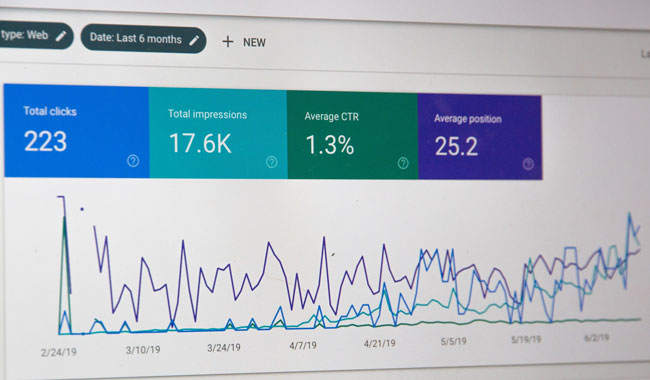In the digital age, email marketing remains one of the most effective ways to reach customers. It’s a cost-effective method of promoting your products or services to a broad audience, allowing you to engage with your target market and boost your bottom line.
However, with inboxes overflowing with hundreds of marketing messages, standing out from the crowd is a challenge many brands contend with.
This is where CTOR, or Click to Open Rate, becomes critical.
CTOR is the percentage of subscribers who click on a link after opening an email. This valuable metric measures the effectiveness of an email campaign’s content, design, and targeting.
Unlike click-through rate (CTR), which refers to the percentage of subscribers who click on a link in an email, CTOR focuses on clicks in relation to opens.
Improving CTOR takes time and effort. It requires a deep understanding of the user journey, knowledge of analytics and email marketing tools, and familiarity with best practices.
However, your investment pays off in terms of higher engagement and conversion rates.
If you’re new to the concept of CTOR, you might be wondering about:
- Email marketing strategies for improving Click to Open Rates
- What factors affect CTOR
- How to track and analyze CTOR for better email campaign success
- Which best practices to apply for CTOR to increase engagement and conversions
Let’s take a look at how improving your campaigns’ CTOR can boost customer engagement and elevate your brand.
Understanding Click to Open Rate (CTOR)
Email marketing is a powerful tool for online businesses to connect with their customers. But how do you measure the effectiveness of your email campaigns?
One important metric is the Click to Open Rate (CTOR), which is the percentage of subscribers who clicked on one or more links in your email after opening it.
Understanding CTOR is essential because it helps you gauge how engaged your subscribers are with your content.
A higher CTOR indicates that your email campaign resonated with your audience and that they found the content relevant, useful, or entertaining.
To calculate CTOR, divide the number of unique clicks by the number of unique opens. For example, if your email was opened by 1,000 subscribers and received 200 clicks, then your CTOR is 20%.
In general, a successful CTOR falls between 6 to 17% depending on the industry your business is in.
Since CTOR reflects the number of people who read your emails, it’s a great way to understand if your email campaigns meet the expectations of your audience.
If your CTOR drops, it’s an indicator that the content is poor or your offers are irrelevant.
Let’s look at some factors that affect CTOR and how to improve it for your subsequent campaigns.
Factors Affecting CTOR
The click-through rate (CTR) and open rates are two critical metrics in email marketing.
The CTOR, which measures the ratio of clicks to opens, is a valuable metric that complements these two.
A high CTOR indicates that the email content resonated with the recipient, resulting in a click. Here are a few factors that affect CTOR:
Subject Line
The subject line is the first thing a recipient sees, and it needs to be compelling and engaging enough to make them want to open the email.
Including relevant keywords is an awesome way to improve open rates, but avoid using clickbait headlines that tend to turn off readers.
Personalization
Personalizing emails by addressing the recipient by name helps to significantly increase customer engagement.
According to the marketing agency Epsilon, 80% of consumers are more willing to make a purchase when brands offer them personalized services.
In addition, in a report by Activetrail, 52% of consumers go elsewhere if they receive non-personalized emails from a brand.
With people receiving numerous emails daily, addressing your customers by name is a sure way to cut through the noise and hold their attention.
Content Relevance
The content of your email should not only be engaging, but also relevant to the recipient. A customer who opens an email and finds the content not relatable is more likely to close it without taking any action.
Some factors to keep in mind when putting your content together include:
- Customer demographics
- User engagement level
- Behavior patterns
- Buyer’s journey stage
Then based on customer behavior such as abandoning carts, send triggered emails that gently return them to the ‘shop’ option.
Ensuring that the content is mobile-friendly, visually appealing, and easy to read is a bonus since more people check their emails on the phone than in past years.
Call-to-Action (CTA)
Ensure you use a CTA that’s clear, actionable, and prominent in the email.
For example, if you’re launching a new product, ask your customers to pre-order and have a specific time frame. Ensure you have a link or button at the beginning and end of the email that’s easily visible even on mobile to make clicking on it convenient.
Remember to use persuasive language and avoid including too many CTAs that end up confusing your readers.
Frequency
Bombarding your subscribers with too many emails leads to fatigue and disengagement. On the flipside, too few emails put your brand out of your clients’ minds.
Once you find the optimal frequency that works best for your audience, stick to it so as to create expectations among your email recipients.
Email marketing tools such as GetResponse and UserEngage are valuable for scheduling emails, thus saving you time and effort in keeping your campaigns on track.
Improving CTOR requires a deep understanding of your audience, their preferences, and what drives them to take action. By optimizing the above factors, you’ll improve your CTOR and boost the success of your email campaigns.
Keep in mind that successful email marketing is not only email-based, but is also best complemented with a strategic approach to online marketing, social media, SEO, and paid advertising.
Bonus Idea: Conduct A/B testing to optimize CTOR. Test different subject lines, personalized content, CTAs, and frequency to determine what works best for your audience. Use this data to continually refine and improve your email campaigns.
The table below provides a comprehensive list of segmentation criteria that can be used to categorize an email list, including demographic information such as age, gender, location, and job title, as well as behavioral factors such as past purchases, website activity, and email engagement metrics.
| Criteria | Description |
| Demographic | Age, Gender, Location, Job Title |
| Behavioral | Past Purchases, Website Activity |
| Engagement | Email Open Rate, Click-Through Rate |
Tracking and Analyzing CTOR in Digital Marketing

Tracking and analyzing CTOR is crucial for the success of any email marketing or email campaign.
In the world of online marketing, analytics play a significant role in determining the effectiveness of any marketing strategy.
“Marketing strategy will impact every piece of your business, and it should be tied to every piece of your business.”
– Brandon Andersen
The best way to track user behavior and understand your client’s journey is to analyze the data collected from your campaigns. Doing so helps you find out:
- Where users are dropping off
- What emails are being opened
- What links the recipients are clicking
Monitoring the CTOR of your email campaigns helps you develop a deeper understanding of your audience and refine your marketing strategies to increase engagement and response rates.
Expert Tip: Use analytics tools like Google Analytics and social media analytics to track CTOR and refine email marketing strategies.
Best Practices for CTOR and Email Campaign Success

To make your email campaigns successful, it’s essential to ensure they’re engaging and captivating to your audience. Nothing turns off a reader faster than boring content which they can’t relate to.
Here are some best practices to increase your click-through rate (CTR) and open rate (OR) and improve the overall success of your email campaigns.
Personalize Emails
Use the recipient’s name in the subject line and throughout the email so that the content resonates with them more.
Addressing your clients by name lends a personal touch to the emails, which helps to build trust between them and your brand. As this trust grows, clients are more likely to increase the time spent browsing your site and making purchases.
Optimize The Subject Line
The subject line is the first thing readers see, so it needs to be attention-grabbing and optimized to increase open rates.
According to conversion rate optimization experts Invespcro, 47% of email recipients open emails based solely on the subject line, while 69% of them move emails to the spam folder using the same assessment.
How do you ensure your subject line is relevant and encourages readers to click? Consider one or a combination of these email marketing tips:
- Generate curiosity about your offerings
- Highlight any offers you have
- Communicate urgency
- Include social proof from other customers
The key thing is to give people a good reason to open your emails by having information that’s important to them in the subject line.
While doing so, try to keep the subject line within 30 to 50 characters. Anything longer than this might not display correctly on tablets and smartphones.
Segment Your Audience
Segmenting your email list helps you target specific groups of users with personalized content.
Using data from your analytics, divide your audience into segments based on demographics, behavior, interests, or other factors and craft different campaigns tailor-made for each of these groups.
Audience-specific campaigns result in higher engagement rates and conversions as compared to blanket messaging.
Watch this video to learn how to segment your email audience
Create Valuable Content
For the content of your email to resonate with your audience, it needs to be relatable to their needs. Use a friendly tone and provide practical information for them to take action on.
Storytelling is a fantastic technique for creating engaging content that your audience will enjoy reading.
The stories you include could be fictional or real-life accounts. As long as they capture the reader’s attention and align with your brand’s offerings, you’re good to go.
Optimize Your Design
The design of your email needs to be visually appealing and consistent with your brand.
Here are a few tips to increase your recipient’s chances of converting to a paying customer:
- Use a responsive design that looks good on different devices
- Include the best images of your products
- Break up text into bite-sized chunks to make it easier to read on screen
- Ensure the links are visible and well distributed throughout the email
A visually appealing email is more likely to elicit action from the reader than a bland-looking one.
Clear Call-to-Action (CTA)
Include a clear and prominent CTA that encourages readers to click. Using actionable language such as ‘shop now’ is also valuable in drawing the recipient to take action.
In addition, ensure the button or link is easy to find within the email to eliminate frustration.
Test and Optimize
A/B testing your email campaigns to understand which elements perform best helps to improve click-through rates and click-to-open rates.
This involves testing different versions of the same email on different audience groups to see how the changes in each email affect the results of the campaign.
Examples of components you would change during A/B testing include:
- Subject lines
- CTA
- Email copy
- Button text
- Types of images
- Time of sending
The electronic equipment store Adorama successfully employed this A/B testing strategy to boost customer engagement and conversion. The company made some changes to their broadcast emails to personalize the content for their clients.
Whereas the original emails were a general mention of a summer solstice sale on camera gear, the revamped version contained different banners depending on the brand of gear that the customers had previously bought.
The Adorama team split-tested the email template with brand-specific banners against a template that had no banner and sent each style of email to tens of thousands of recipients.
Those who had purchased Nikon in the past received an email with a Nikon banner, while for customers who bought Sony and Canon, the banners reflected those brands.
Clicking on the banner took the customers to landing pages for an exclusive sale for that particular brand.
The emails with the banners achieved an 18.25% boost in revenue per mailing, a 25.33% increase in average order value, and had 20% more engagement as compared to the emails without banners.
Remember: You’ll probably have to do several versions of your A/B testing over time as content trends and customer preferences evolve.
In addition to these best practices, integrating social media and paid advertising into your overall email marketing strategy helps you reach a wider audience and drive more traffic to your website.
By understanding the user journey and incorporating SEO tactics, you’ll ensure that your email campaigns reach the right audience and result in higher engagement rates and conversions.
“Social media is about sociology and psychology more than technology.”
— Brian Solis
Using analytics to track your CTOR, open rate, and other metrics will help you optimize your email campaigns moving forward and improve the overall success of your marketing.
The table below presents the results of A/B testing, showcasing various elements such as subject line, email copy, call-to-action (CTA), time of sending, open rate, and click-through rate, aimed at improving the success of an email campaign.
| Subject Line | Email Copy | CTA | Time Of Sending | Open Rate | Click-Through-Rate |
| New Product Launch | Introducing our… | “Shop Now” | 9:00 AM | 22% | 5% |
| Memorial Day Sale | Don’t miss out… | “Shop Now” | 12:00 PM | 18% | 4% |
| Exclusive Discount | Get 20% off today! | “Claim Offer” | 3:00 PM | 24% | 7% |
| Limited Time Offer | Last chance to… | “Buy Now” | 6:00 PM | 20% | 6% |
| Summer Collection | Discover our… | “Explore Now” | 10:00 AM | 26% | 8% |
Take Your Email Campaigns to the Next Level: Optimize Your Click-to-Open Rates
After putting so much work into your email campaigns, it’s only natural to want them to perform at their best.
Monitoring and analyzing your CTOR helps you determine which strategies are working and which ones need improvement. As you tweak different aspects of your campaigns, you’ll see a boost in customer engagement.
It’s also important to remember that email marketing is just one aspect of your overall digital marketing strategy. Integrating email campaigns with social media, SEO, paid advertising, and other online marketing efforts creates a seamless user journey and drives even more success.
If you’d like to stay ahead of the competition and level up your overall digital marketing skills, consider signing up for our newsletter.
You’ll receive the latest insights, exclusive tips, and information about our digital marketing workshops that will help you take your campaigns to new heights.
